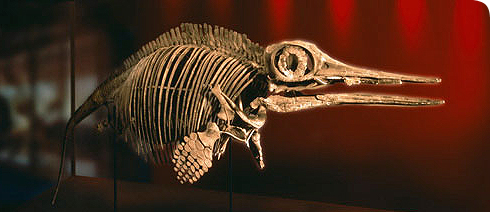Ophthalmosaurus icenicus
Ophthalmosaurus icenicus is a member of a long extinct group of marine reptiles called ichthyosaurs.
Ophthalmosaurus icenicus means ‘eye lizard’ as Ophthalmosaurus has the largest known eye in the animal kingdom.
Ophthalmosaurus icenicus lived during Middle to Upper Jurassic times (164-150 million years ago) and its fossilized remains have been found primarily in southern England and also in France and Russia.
Species detail
Ophthalmosaurus was an entirely aquatic air-breathing reptile with a barrel-shaped streamlined body. It swam using its powerful tail for propulsion and its broad forepaddles for steering and turning. The nearest modern comparison in terms of habit and lifestyle is the sperm whale (Physeter catodon).
-

Body shape and swimming
Learn about the size and shape of Ophthalmosaurus icenicus, about its huge eyes and what is known about its lifestyle and diet.
-

Why did it have such large eyes?
Discover more about the size and shape of Ophthalmosaurus icenicus eyes and why they are so large.
-

Behaviour
Learn about what is known about the lifestyle and diet of Ophthalmosaurus icenicus.
-

Distribution
Find out where fossils of Ophthalmosaurus icenicus have been found.
-

Habitat
Discover the types of habitat in which Ophthalmosaurus icenicus lived and the contemporary animals that shared its environment.
-

References
Get reference information for Ophthalmosaurus icenicus.
Images
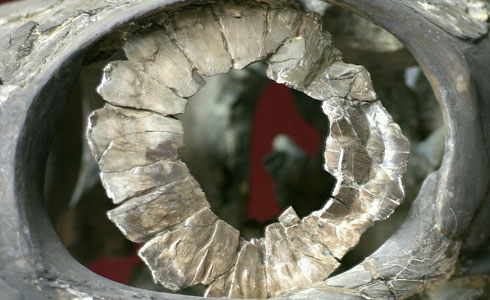
The eye socket of Ophthalmosaurus contains a ring of small bones which indicate the large size of the eye.
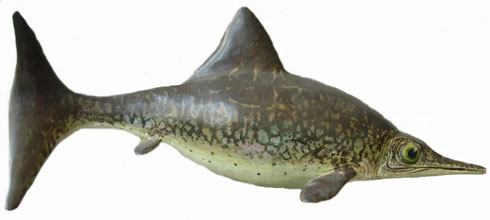
A life restoration model of Ophthalmosaurus
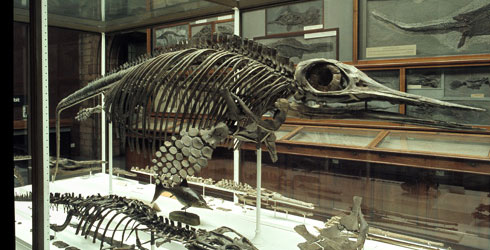
An old display of Ophthalmosaurus icenicus together with skeletons and skulls of marine crocodiles that shared its habitat.

A fore-paddle of Ophthalmosaurus. The single bone at the top is the upper arm bone, the humerus. Ichthyosaurs evolved a large number of small round ‘finger’ bones to support a broad fin.
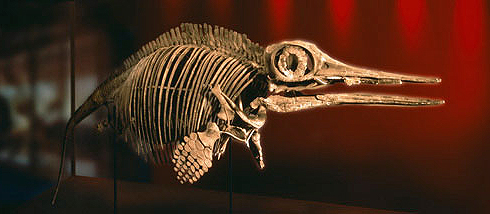
Ophthalmosaurus icenicus was a large, deep-diving ichthyosaur. This 4 metre long skeleton is on display in the Museum’s Hintze Hall (formerly the Central Hall).
About the author
Dr Angela Milner
Angela was Associate Keeper of Palaeontology until 30 November 2009 and is now a Scientific Associate. She has published widely on dinosaurs and the origin of birds.
